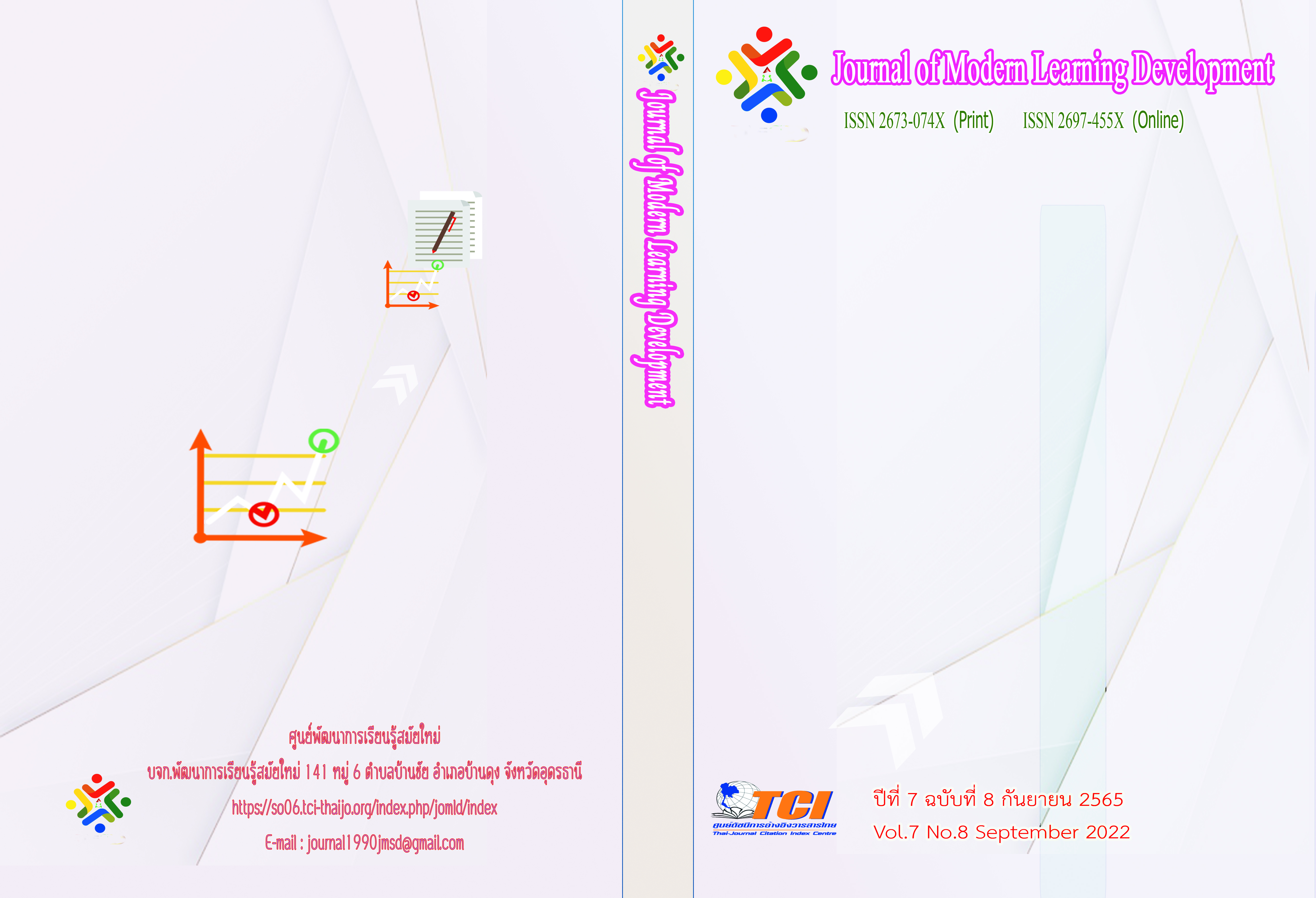Relationship between Fingerprint Pattern and Gaming Behaviors of Students
Main Article Content
Abstract
The purposes of this research were to study relationship between fingerprint pattern and gaming behaviors of students. Sample were the student volunteers of all grade levels with different gaming behaviors, with 45 students. The sampling method is purposive sampling. The research instruments used in this study were data entry form consisting of the Finger Scanner, the personal computer, and Automated Inkless Finger-print Imaging Software. The data collected in this study were analyzed by means of frequency, percentage, and Pearson Correlation.
Results of the study revealed as follows: The left hand of the students had the most Loop fingerprint (64.46%). Especially, the most was the little finger (77.8%). The right hand of the students had the most Loop fingerprint (62.24%). Especially, the most were the little finger and middle finger (75.60%). The Loop fingerprint had the highest correlation coefficient in the same direction (r = 0.815). The Whorl fingerprint had the highest correlation coefficient in the opposite direction (r = - 0.736). there was statistically significant at p < 0.01.
Article Details
References
กมลวรรณ อังศรีสุรพร. (2554). การศึกษาความสามารถทางพหุปัญญาของเด็กปฐมวัยที่ได้รับการจัดกิจกรรมตามรูปแบบพหุปัญญาเพื่อการเรียนรู้โดยใช้นิทานเป็นสื่อ. วิทยานิพนธ์ปริญญามหาบัณฑิต. บัณฑิตวิทยาลัย: มหาวิทยาลัยศรีนครินทรวิโรฒ.
กุลนรี หาญพัฒนชัยกูร และคณะ. (2564). พฤติกรรมและผลกระทบจากการติดเกมของนักเรียนชั้นมัธยมศึกษาโรงเรียนในเขตเทศบาลนครขอนแก่น. วารสารศูนย์อนามัยที่ 9: วารสารส่งเสริมสุขภาพและอนามัย สิ่งแวดล้อม. 15 (38). 5
จิราภรณ์ อรุณากูร คณะแพทย์ศาสตร์โรงพยาบาลรามาธิบดี มหาวิทยาลัยมหิดล. (2561). เด็กติดเกม”
ปัญหาสำคัญที่พ่อแม่ต้องดูแล. ออนไลน์. สืบค้นเมื่อวันที่ 5 กุมภาพันธ์ 2565. แหล่งที่มา
แหล่งที่มา: https://www.rama.mahidol.ac.th/ramachannel/ondemand/เด็กติดเกม-ปัญหาสำคัญ/
จุฑามาศ แหนจอน. (2558). สมองกับอารมณ์: มหัศจรรย์ความเชื่อมโยง. วารสารราชพฤกษ์. 13 (3), 9-19
บุญเลี้ยง จอดนอก. (2554). [SCIED] ประสาทวิทยาศาสตร์ (NEUROSCIENCE) กับวิทยาศาสตร์ศึกษา
(SCIENCE EDUCATION)” วารสาร สควค. 18, 10-11.
ปัญจนาฏ วรวัฒนชัย. (2559). กลไกสมองสองซีกกับความคิดสร้างสรรค์ของมนุษย์. วารสารสารสนเทศ. 15 (2), 1-12.
สมทรง ณ นคร, นิยะดา ห่อนาค, สุพรรณี อึ้งปัญสัตวงศ์, วิชุดา ไชยศิวามงคล, อำนวย ศรีวงศ์กูล
และรัศมี สุวรรณวีระกำธร. (2552). วิทยาศาสตร์และพันธุศาสตร์ลายนิ้วมือ. วารสารสำนัก
บริหารการวิจัย มหาวิทยาลัยขอนแก่น. 4 (3), 35-39.
สมทรง ณ นคร และคณะ. (2553). ความสัมพันธ์ระหว่างแบบลายนิ้วมือและพหุปัญญา. วารสารสำนักบริหารการวิจัย มหาวิทยาลัยขอนแก่น, 16 (8), 951-964.
Babler WJ. (1978). Prenatal selection and dermatoglyphic patterns. Am J Phys Anthropol, 48 (1), 7-21.
Campbell NA, Reece JB. (2002). Biology. New York: Benjamin Cummings Pearson Education.
Der Kaloustian, V.M., Kurban, A.K. (1979). Dermatoglyphics. In: Genetic Diseases of the Skin. Springer, Berlin, Heidelberg. Online. Retrieve https://doi.org/10.1007/978-3-642-67152-4_17
Galton, F. (1892). Fingerprints. London: Macmillan Co. online. Retrieved 2 February 2022, from http://www.biometricbits.com/Galton-Fingerprints-1892.pdf
Gardner, H. (1999). Intelligence reframed: Multiple intelligences for the 21st century. New York: Basic Books.
Holt, S. B. (1973). The significance of dermatoglyphics in medicine. A short survey and
summary. Clin. Pedatr (Philadelphia), 12, 471–484
Mertens TR, Hammersmith RL. (1998). Genetics: laboratory investigations. 11th ed. New Jersey: Prentice Hall Upper Saddle River.
Mostafa Najafi. (2009). Association between Finger Patterns of Digit II and Intelligence
Quotient Level in Adolescents. Iran J Pediatr, 19 (3), 277-284


